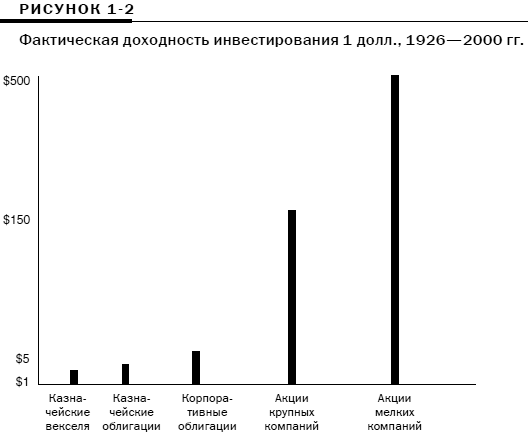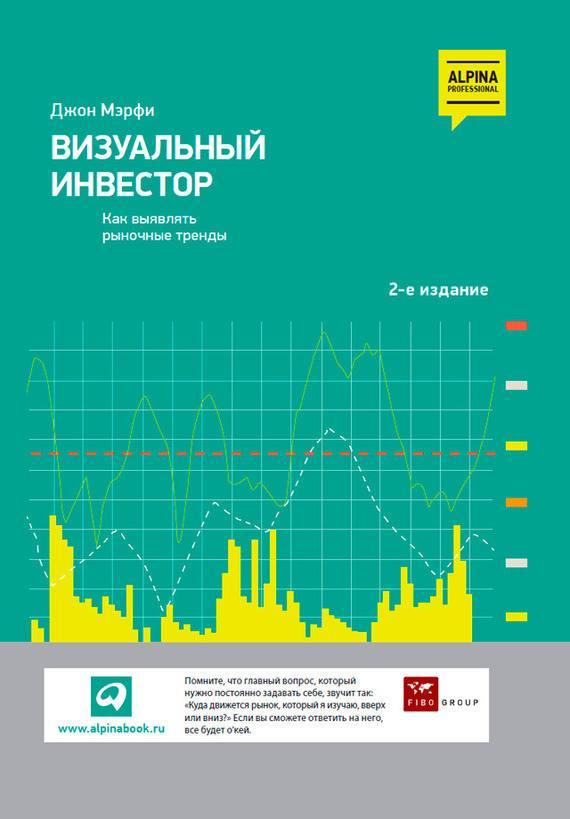
How to check 502 account obligations. Validation of budget expenditures. What are the budget commitments made?
T. Silvestrova
The topic of the order of reflection on the accounts of accounting operations for the authorization of budget expenditures has been repeatedly considered on the pages of our journal. She still has not lost relevance. Questions about the reflection on the accounts for the authorization of the costs of certain operations regularly come to the publisher. In 2011, most budgetary institutions do not receive subsidies from the budget for the fulfillment of a state (municipal) assignment and are recipients of budgetary funds by virtue of the provisions of Federal Law of 08.05.2010 No. 83-ФЗ “On Amending Certain Legislative Acts of the Russian Federation in Connection with Improvement legal status of state (municipal) institutions. ” Therefore, fulfilling the request of our readers (budgetary institutions that are recipients of budgetary funds in 2011 (PBU)), we consider some situations for authorizing budget expenditures.
Budget institution - recipient of budget funds - organizes in accordance with the norms Instructions No. 162n . We offer without going into the theoretical aspects of authorizing budget expenditures ( sec. 5 Instructions No. 162n), consider several situations for the adoption and repayment of obligations of an institution within the framework of budgetary and revenue-generating activities (how these operations will be reflected in the accounts of accounting and in the Report on budgetary obligations assumed (f. 0503128).
Situation 1
In 2010, a budget institution, as part of budget activity, concluded an agreement with a third-party organization for the provision of cellular services. The cost of the contract is 230,000 rubles. According to the terms of the contract, the institution pays an advance in the amount of 30% of the contract value, subsequent payment for services is made upon the fact of issuing invoices (invoices) to the institution. In 2010, the institution consumed communication services in the amount of 230,000 rubles, but due to the lack of funding, only 200,000 rubles were paid. The amount of accepted but not fulfilled budget obligations is 30,000 rubles. In 2011, the sum of limits on budgetary obligations and budgetary appropriations was allocated taking into account repayment of accounts payable and amounted to 300,000 rubles. At the expense of budgetary funds in 2011, the obligations of 2010 (30,000 rubles) were repaid, an agreement was signed for cellular services worth 120,000 rubles. As of July 1, 2011 (for the period from January to June 2011), the following payments were made under the agreement:
* Assume that a mobile operator was invoiced to pay for communication services as of June 30, 2011. According to it, monetary obligations were accepted (the account and the act of work performed were taken into account), and payment was made in July.
Limits on budgetary obligations are reported to the institution on a quarterly basis. Thus, in January and April 2011, the amount of budgetary funding received under sub-article 221 “Communication Services” of KOSGU is equal to:
- in January - 75,000 rubles. (including 30,000 rubles for repayment of obligations of the previous year);
- in April - 75,000 rubles.
The annual size of the limits of budgetary obligations under sub-article 221 of KOSGU is 300,000 rubles.
The institution has accepted, but not fulfilled budgetary obligations in the amount of 30,000 rubles. As of December 31, 2010 they are listed on the account 1 502 11 221.
Let's see how these payments are reflected in the accounting records of authorization accounts.
Debit |
Credit |
Amount, rub. |
Paragraph Instruction No. 162n |
|
Approval and reporting to the institution of the amount of limits of budgetary obligations (LBO) under sub-article 221 of the COSGU (expenses for communication services) |
||||
- for the current year |
||||
- for obligations accepted last year but not paid off |
||||
Reflection of the amount of budgetary commitments made, the fulfillment of which is provided for by the budget appropriations approved for the relevant year: |
||||
- for the current year |
||||
- for obligations of the last year |
||||
Acceptance of monetary obligations based on the terms of the contract: |
||||
- in the amount of advance payment (120 000 rub. X 30%) |
||||
- in the amount of the invoice for payment of communication services for May 2011 |
||||
- in the amount of the invoice for payment of communication services for June 2011 |
||||
- on the fulfillment of obligations undertaken last year |
||||
The receipt of the amount of budget financing: |
||||
- in January 2011 |
||||
- in April 2011 |
The authorization of budget expenditures does not provide for the reflection of the operation to fulfill the accepted monetary obligations. The amount of the accepted obligations and the amount of the accepted monetary obligations are shown, but not the amount of the fulfillment of the monetary obligation. In the Report on accepted budgetary obligations (f. 0503128), column 10 shows the amount of monetary obligations performed. The indicators in this column are formed on the basis of data on the corresponding accounts of analytical accounting accounts 1 304 05 000 “Settlements for payments from the budget with the financial authority” (in terms of budget expenditures), 1 304 05 320 , 1 304 05 330 , 1 304 05 340 , 1 304 05 530 ), with the exception of data on the operations of the main administrator, manager, recipient of budget funds for transferring funds to the manager (recipient) of budget funds to budget accounts in rubles and foreign currency opened with credit institutions, reflected in correspondence with the corresponding accounts accounts 1304 04 000 "Intra-departmental calculations", and the restoration of these funds; on the basis of analytical data on disposals recorded for off-balance accounts 18 “Disposal of funds from the accounts of the institution” open to accounts 1 201 21 000 “Institutional funds in accounts with credit institutions” and 1 201 27 000 “Institutional funds in foreign currency on accounts with a credit institution”, broken down by codes according to the budget classification of the Russian Federation, on the amounts of monetary obligations fulfilled for budget expenditures ( clause 71 of Instructions No. 191n).
According to the norms clause 11 of Instructions No. 157n entries in accounting registers (transaction logs) are made as transactions are made and primary (consolidated) accounting documents are accepted for accounting, but no later than the next day after they are received on the basis of both individual documents and a group of homogeneous documents. The correspondence of accounts in the corresponding transaction log is recorded depending on the nature of the operations on the debit of one account and the credit of another account.
Monetary obligations - the obligation of an institution to pay certain funds to the budget, to an individual or legal entity in accordance with the terms of a civil law transaction concluded within its budgetary powers, or with the provisions of the legislation of the Russian Federation, other legal act, the terms of an agreement or agreement ( clause 308 of Instructions No. 157n).
Thus, when receiving documents for payment (invoice, invoice with an attached act of completed work, waybill, etc.), the accountant must accept them for accounting and on accounts for accounting authorization of settlements ( debit account 1 502 11 000 ) show the amount of accepted monetary obligations. However, due to the lack of the necessary amount of cash or for other reasons, the accepted monetary obligation may not be fulfilled. Accepting a monetary obligation at the time of payment is also methodologically incorrect. We offer to solve this problem in the accounting policy:
- introduction of analytical code to accounts 1 502 11 000 and 1 502 12 000 , allowing to identify the performance of a monetary obligation;
- introduction to the correspondence of accounts of additional postings reflecting the fulfillment of a monetary obligation: debit account 1502 12 000 and credit account 1502 11 000 (will be done on the basis of a bank statement).
Recall that according to clause 2 of Instructions No. 162n if there are no budget accounts in the list of typical correspondences (Appendix 1 to Instruction No. 162n), cash services, financial authorities, and main managers of budgetary funds have the right to determine the correspondence of accounts necessary for budget accounting to the extent that does not contradict Instruction No. 162n. At the request of a budgetary institution, its founder has the right to establish such correspondence of accounts.
For reference
By credit account 1 501
13
000
the size of the limits of budgetary obligations approved by the budget institution is reflected, the debit of the account shows the amount of budgetary obligations accepted. The credit balance on the account shows the volume of limits on budgetary obligations for which the institution has not accepted obligations.
By credit account 1 502 11 000 the amount of obligations assumed by the institution is reflected, and on the debit of this account, the amount of accepted monetary obligations.
Credit indicator for account 1 503 13 000 reflects the amount of budgetary allocations not spent by the institution under the corresponding article (sub-article) of the budget classification. There should not be a debit indicator for this account: this means that the budgetary institution has accepted obligations more than the budget allocation has been allocated to it (more than the institution can pay).
Instruction No. 191n does not explain the procedure for repayment of obligations accepted but not fulfilled in the previous reporting period (indicators of the first year following the current one, reflected in the 22nd category of the account number according to analytical accounting code 2). From the procedure for filling out the form of this report, it follows that all indicators are reflected in it for the current financial year. Anna Nikolaevna Krivenets (head of the department of methodological support of budget accounting and reporting of the Federal Treasury) explained that the indicators of authorization of budget expenditures of the first year following the current should also be reflected in the report.
So, column 4 reflects indicators formed by accounts 1,503 15,221 and 1 503 25 221 , column 5 - by accounts 1 501 15 221 and 1 501 25 221 . Column 6 is formed taking into account the information reflected on accounts 1,502 11,221 and 1 502 21 221 . Box 10 will be completed by account 1 304 05 221 what we talked about above.
Situation 2
A budget institution provides services as part of revenue-generating activities. The following indicators are approved in the estimates of income and expenses on income-generating activities:
As of July 1, 2011, a budget institution carried out the following business operations:
- accrued and paid in the amount of 60,000 rubles.
- accrued and paid to the budget in the amount of 20,400 rubles .;
- the amount of insurance compensation received from the insurance organization in the amount of 90,000 rubles .;
- An agreement was concluded with a third-party organization for car repair in the amount of 90,000 rubles. (was paid after completion of work under the contract);
- equipment purchased in the amount of 150,000 rubles. (the terms of the contract did not provide for an advance, the equipment was paid after its delivery to the institution).
All accepted monetary obligations in the reporting period by the institution were fulfilled.
These operations on the accounts for the authorization of expenses shall be reflected as follows:
Debit |
Credit |
Amount, rub. |
Paragraph Instruction No. 162n |
|
Reflects the amount of estimated appointments of the institution in the framework of income-generating activities for the current financial year in the context of: |
||||
- salary |
||||
- insurance premiums |
||||
- acquisition of equipment |
||||
- repair of fixed assets |
||||
The institution has undertaken obligations for the current year in the context of: |
||||
- salary |
||||
- insurance premiums |
||||
- acquisition of equipment |
||||
- repair of fixed assets |
||||
The institution accepted monetary obligations in the context of: |
||||
- salary |
||||
- insurance premiums |
||||
- acquisition of equipment |
||||
- repair of fixed assets |
Instruction No. 162n does not provide for the reflection on the accounts of the authorization of expenses in the framework of income-generating activities:
- the volume of planned revenues approved in the estimates of income and expenses for income-generating activities for the current year;
- approved amount of financial security;
- received financial security;
- repayment of the arising monetary obligation.
At the same time, these indicators are necessary for keeping track of the amounts approved by the estimate of income and expenses for income-generating activities of indicators of income (income) and expenses (payments), as well as obligations (monetary obligations) assumed by the institution for the current (next, first year, next) for the next, second year, following the next) fiscal year. Without them, the scheme of operations for authorizing expenses is not complete and does not bear the functional and semantic load provided for by the legislator.
It should be noted that in Instructions No. 174n the procedure for recording operations to authorize the expenses of an institution as part of activities performed by a budgetary institution in excess of the approved state (municipal) assignment (as part of revenue-generating activities) is described in more detail. In 2011, budgetary institutions - recipients of budgetary funds using Instruction No. 162n, can use the information provided in sec. 5 Instructions No. 174n, in order to prescribe in the accounting policy the procedure for authorizing costs used in the institution, or to come up with a different scheme of correspondence of accounts. The use of Instruction No. 174n in the development of the scheme in this case seems more convenient to us for the following reasons:
- do not invent what the Ministry of Finance has already come up with;
- the budget institution will go to work in the future according to Instruction No. 174n, in connection with which the approximation of accounting to the provisions of this instruction in at least one section will now facilitate the transition to the application of this instruction in the future;
- Instruction No. 174n provides for the reflection of operations to authorize expenses on those accounts that are not used in Instruction No. 162n (for example, bills 0 507 00 000 , 0 508 00 000 ) At the same time, both Instruction No. 174 and Instruction No. 162n supplement and detail the accounting under Instruction No. 157n for recipients of budgetary funds and budgetary institutions that are not recipients of budgetary funds. Instruction No. 157n, in turn, provides for the use of accounts such as 0 507 00 000 and 0 508 00 000 budgetary institutions, both receiving and not receiving budgetary funds. Thus, if the founder does not mind, the institution can use the account data in its work.
In the accounting policy, the following correspondence of accounts for authorizing expenses on income-generating activities may be approved:
Debit |
Credit |
|
Approved the amount of income of a budget institution in the estimates of income and expenses on income-generating activities |
||
Changes were made to the revenue side of the estimates of income and expenses for income-generating activities in the direction of increase (for example, as in the situation considered above: initially, the budget provided for the receipt of income in the form of insurance payments under the mandatory insurance contract in the amount of 80,000 rubles, but actually received from insurance 90,000 rubles. Therefore, it is necessary to amend the estimate.) |
||
Changes have been made to the revenue side of the estimates of income and expenses for income-generating activities in the direction of reduction by the red reversal method |
||
Approved the amount of expenses of a budget institution in the estimates of income and expenses for income-generating activities |
||
Changes were made to the expenditure part of the estimate: |
||
- upwards |
||
- downward by the red reversal method |
||
Reflected the amount accepted by the institution of obligations in accordance with the law, other regulatory legal act, contract, agreement |
||
The planned amount of cash receipts approved in the estimates of income and expenses is shown. |
||
Reflects the volume of implementation of planned indicators for the receipt of income (actually received income) |
||
Monetary obligations have been accepted (obligations for which, in accordance with the terms of a civil law transaction concluded by a budget institution or by force of law, etc., an obligation to pay has arisen) |
||
Settlement of accepted cash liabilities |
note
This account correspondence scheme must be agreed with the founder.
Based on the conditions described in situation 2, we will see how the indicators of budget spending authorization are reflected in the Report on accepted expenditure obligations for income-generating activities (f. 0503138).
Order of the Ministry of Finance of the Russian Federation dated December 6, 2010 No. 162n “On Approving the Chart of Accounts of the Budget Accounting and the Instructions for its Application”.
The form of the report and the procedure for filling it out are approved by Order of the Ministry of Finance of the Russian Federation dated December 28, 2010 No. 191n “On approval of the Instruction on the procedure for compiling and presenting annual, quarterly and monthly reports on budget execution of the budget system of the Russian Federation” (hereinafter - Instruction No. 191n).
Order of the Ministry of Finance of the Russian Federation of December 16, 2010 No. 174n “On approval of the Chart of Accounts of Budget Institutions and the Instructions for its Application”
The 500th authorization account will easily confuse even an experienced specialist. In the article we will talk about the features and difficulties of accounting. Here are some examples that will help the accountant of a budget institution to understand.
Accounts of the 500th group summarize information on the fulfillment of the planned assignments of the FCD plan. Which account to apply in a particular case depends on the accounting object:
- liabilities - 0 502 00 000;
- estimated (planned, forecast) appointments - 0 504 00 000;
- the right to assume obligations - 0 506 00 000;
- approved amount of financial security - 0 507 00 000;
- financial security received - 0 508 00 000.
- Important article:
The code shown in rank 22 of the account number (0 500 00 000) depends on which financial period the obligation relates to (see note on page 20). Consider how to apply the 500th account.
Account 0 502 00 000 “Liabilities”
On the account 0 502 00 000 reflect the adopted budgetary and monetary, accepted and deferred obligations. They cause the greatest difficulties, since the data on them are included in the reporting (f. 0503738, f. 0503775).
For credit accounts 0 502 01 000 reflect the amount of obligations that the institution has accepted. This, for example, the amount of contracts, salaries, payroll taxes, payments on writ of execution.
And for the credit of the account 0 502 02 000 - the amount of monetary obligations that the institution accepted. This can be accountable amounts, property value, advances under contracts, etc.
When the services are provided or the property has arrived, but they have not yet been paid, an unfulfilled monetary obligation arises. In the financial statements, such an amount is given in column 11 of form 0503738. And it should be equal to payables in the form of 0503769.
Account 0 502 07 000 take into account the obligations assumed. An account is used if the institution has contracted in a competitive manner. Saving amounts are shown on the debit of the account.
Example 1:
The institution posted a notice on the auction to buy a car with a maximum price of 1 million rubles. As a result of the auction, a contract for 830 thousand rubles was signed. (CFD 4).
The accountant made records:
DEBIT 07 01 0000000000 244 4 506 10 310
LOAN 07 01 0000000000 244 4 502 17 310
- 1 000 000 rub. - an obligation is accepted when posting a notice;
LOAN 07 01 0000000000 244 4 502 11 310
- 830,000 rubles. - an obligation is accepted at the conclusion of the contract;
DEBIT 07 01 0000000000 244 4 502 17 310
LOAN 07 01 0000000000 244 4 506 10 310
- 170,000 rubles. - reflected the amount of savings.
500 accounts 0 502 99 000 are used for deferred liabilities for other regular years (outside the planning period). That is, it appears in the account when the accountant creates, for example, a reserve for vacation pay. In this case, the loan shows the amount of the reserve. Postings are made in conjunction with the posting to account 0 401 60 000 “Reserves for future expenses”. Amounts of obligations assumed at the expense of previously formed deferred obligations reflect the credit of the account 0 502 01 000 and the debit of the account 0 502 99 000.
Example 2:
In 2016, a budgetary educational institution accrued a reserve for upcoming vacations in the amount of 100 thousand rubles. In 2017, it used the created reserve.
The accountant issued these operations with the following entries:
DEBIT 07 02 0000000000 111 4 401 20 211
LOAN 07 02 0000000000 111 4 401 60 211
- 100 000 rub. - accrued reserve for the upcoming holidays;
DEBIT 07 02 0000000000 111 4 506 91 211
LOAN 07 02 0000000000 111 4 502 99 211
- 100 000 rub. - a budget commitment has been made against the allowance for vacations;
DEBIT 07 02 0000000000 111 4 401 60 211
LOAN 07 02 0000000000 111 4 302 11 211
- 20 000 rub. - accrued amounts for vacation pay in 2017 from the reserve;
DEBIT 07 02 0000000000 111 4 502 99 211
LOAN 07 02 0000000000 111 4 502 11 211
- 20 000 rub. - a commitment was made in 2017 when using the previously created reserve;
DEBIT 07 02 0000000000 111 4 506 10 211
LOAN 07 02 0000000000 111 4 506 91 211
- 20 000 rub. - the obligation is accepted due to previously formed deferred obligations.
Account 0 504 00 000 “Estimated (planned, forecast) appointments”
On account 0 504 00 000 take into account the performance of planned assignments in the context of accounting objects. Debit indicator is the sum of planned appointments:
- expenses (account 0 504 00 200);
- on the acquisition of non-financial assets (account 0 504 00 300);
- on the acquisition of financial assets (account 0 504 00 500);
- for repayment of debt obligations (account 0 504 00 800).
The credit indicator reflects the amount of estimated appointments:
- by income (account 0 504 00 100);
- on the disposal of financial assets (account 0 504 00 600);
- to increase liabilities (account 0 504 00 700).
Analytical accounting of operations on this account is kept in the accounting card for estimated (planned) appointments.
Example 3:
The budget institution included in the plan of financial and economic activity: income from the provision of paid services - 2 million rubles .; expenses for the payment of wages - 1.5 million rubles; accruals on wage payments - 300 thousand rubles; purchase of supplies - 200 thousand rubles.
The accountant showed this in the following way:
DEBIT 07 04 0000000000 130 2 507 10 130
LOAN 07 04 0000000000 130 2 504 11 130
- 2,000,000 rubles. - reflected the amount of income;
DEBIT 07 04 0000000000 111 2 504 11 211
LOAN 07 04 0000000000 111 2 506 10 211
- 1,500,000 rubles. - reflected the cost of paying salaries;
DEBIT 07 04 0000000000 119 2 504 11 213
LOAN 07 04 0000000000 119 2 506 10 213
- 300,000 rubles. - reflected the costs of accrual of labor;
DEBIT 07 04 0000000000 244 2 504 11 340
LOAN 07 04 0000000000 244 2 506 10 340
- 200 000 rub. - reflected the cost of the acquisition of matzapas.
Account 0 506 00 000 “The right to accept obligations”
On the account 0 506 00 000 reflect the amount of the institution's right to assume obligations within the framework of the FCD plan. The credit indicator for the accounts of analytical accounting reflects the volume of liabilities in monetary terms, the adoption of which is ensured by the planned assignments for income or receipts. How to use the account in accounting, see examples 1, 2, 3.
500th account 0 507 00 000 “Approved amount of financial security”
On the debit of account 0 507 00 000 indicate information on the income and receipts of the institution, which are approved by the plan of FCD for the corresponding financial year. And on a loan - amounts of performance.
The return of previously received income or receipts is reflected in the “red reversal” way for the credit of accounts of analytical accounting (0 507 00 400, 0 507 00 600, 0 507 00 700) and the debit of the corresponding accounts of analytical accounting of account 0 508 000 00.
Example 4:
The educational institution in terms of FCD approved the income from the provision of paid services - 2 million rubles.
The accountant recorded the posting:
DEBIT 07 02 0000000000 130 2 507 10 130
LOAN 07 02 0000000000 130 2 504 11 130
- 2,000,000 rubles. - reflected the amount of income.
Account 0 508 00 000 “Received financial security”
According to the debit of the account 0 508 00 000 show the amounts of financial provisions, income, receipts that the institution received in the current financial year.
The amounts of refunds of previously received income (receipts) are reflected in the debit of account 0 508 00 000 using the “red reversal” method and the credit of the corresponding accounts of the analytical accounting of account 0 507 00 000.
Example 5:
The educational institution returned payment to the customer for unproven services in the amount of 15 thousand rubles.
When drawing up the posting, the accountant used the red reversal method:
DEBIT 07 02 0000000000 130 2 508 10 130
LOAN 07 02 0000000000 130 2 507 10 130
- 15 000 rub. - reflects the amount of the return of previously received income.
Budgetary obligations (account 502) are obligations of a state organization to incur expenses during a certain financial period, which is regulated by Article 6 of the RF Civil Code. The public sector organization, which receives budget money, assumes various kinds of obligations within the limits allocated to it (LBO). Accounting for such obligations in public sector institutions must be based on documentation confirming their acceptance.
Budgetary obligations (BO) appear when concluding agreements with individuals or third-party companies. The rules for the adoption of BO are regulated in paragraph 3 of Art. 219 BC of the Russian Federation. Information about the arising BO is submitted to the Treasury within 3 days after the conclusion of the transaction.
Organizations also have financial obligations, implying that the institution must transfer money to the executive party in accordance with the signed agreement.
Usually, BO entails the appearance of a monetary obligation. The state manager allocates money to the organization within the planned limits for the payment of BO. When an institution receives these funds, it immediately has a monetary obligation.
For example, a public sector organization has signed a contract with an office equipment supplier company in the amount of 400 tons. Upon signing the contract, BOs amounting to 400 tons of rubles arise. According to the contract, the supplier on the agreed day delivered the first batch of equipment in the amount of 250 tons. An invoice for this amount is a fact of the occurrence of a monetary obligation to pay for the delivered equipment. The budget transfers these funds to the organization's account to close the financial obligations that have arisen.
Score 502 01 Commitments made
Postings on ct 502 01 000, showing the adoption of BO, are used in correspondence with Dt accounts:
- 501 00 - used by a government agency;
- 506 00 - to account for the costs of budget or autonomous institutions.
For example, if the recipient of budgetary funds has signed an agreement with a third-party organization for the provision of consulting services, the fact of acceptance of the BO will be reflected in the accounting record:
Dt 1 506 13 226;
Ct 1 502 11 226.
This shows that accepted BOs are paid by budget money (1), accepted BOs are distributed according to the limit (506), LBOs were allocated in the current year (13), payment is made for the services performed (). The loan reflects the adoption of budgetary obligations and they relate to the current year.
Score 502 02 Accepted monetary obligations
Cash liabilities reflect the obligation of a public sector institution to pay the budget, individuals or third-party companies money for fulfilling the terms of an agreement, agreement or on the basis of legislative and legal instructions of the Russian Federation.
“Accepted monetary obligations” are reflected in the accounting of a budgetary institution by the entry:
Dt 502 01 XXX;
Kt 502 02 XXX.
Consider how to close the account 502 12 at the end of the year using the above example. The accounting record will be as follows:
Dt 1 502 11 226;
Ct 1 502 12 226.
Where 12 means that financial obligations are accepted in the current year. At the end of the financial period, funds should not remain on this account, since it is recommended that the allocated LBOs of the current year be fully utilized before the end of the period. At the end of the current financial period, amounts on authorized accounts cannot be carried over to the next year. Balances on accounts of the current year must be re-registered for the next year.
Score 502 07 Commitments
At 502 07 reflect the amount of money that was indicated in the value of the agreement when determining the performers selected on a competitive basis. In accounting, the time taken by the BO is considered the date when information about the holding of competitive events was posted on a special procurement website.
The obligations assumed are recorded in the following records:
Dt 506 10 XXX;
Kt 502 07 XXX.
The amount is taken at the highest value of the lot indicated in the tender documents:
Dt 502 07 XXX;
Kt 502 01 XXX.
The posting shows the amount of the contract concluded with an indication of the period during which all its conditions must be met:
Dt 502 07 XXX;
Kt 506 10 XXX.
The posting shows the adjustment of the amount if, as a result of the tender, the contract value was less than the starting price of the lot:
Dt 506 10 XXX;
Kt 502 07 XXX.
The accepted BO is corrected by the reversal method for the amount of the signed agreement.
Account 502 17 and transactions thereon
Accounting for analytical accounts is disaggregated by financial period and type of expense. The periods of execution of the BO are divided into codes: the current year (code 1), the next year (code 2), the second year after the current (code 3), the second year after the next (code 4) and other regular periods (code 9).
502 17 contains the funds accepted by the institution of BO, which are debited by the accounting record:
Dt 506 10 XXX;
Kt 502 17 XXX.
The fact of the conclusion of the agreement will be reflected in the posting:
Dt 502 17 XXX;
Kt 502 11 XXX.
This means that the BOs adopted under the agreements signed on the basis of competitive procurement in the current year.
Account 502 27 and transactions thereon
When the holding of competitive events and the placement of a notice falls at the end of the year, the obligations assumed for the next funding period are carried out as follows:
Dt 506 20 XXX;
Kt 502 27 XXX.
But at the beginning of the new year, it is necessary to transfer the remaining funds of the accepted BOs to the authorized expenses of the current period by posting:
Dt 502 27 XXX;
Kt 502 17 XXX.
Accounts 502 37 and 502 47 and postings thereon
From the main manager can be obtained LBO, which can be used not only in the current year, but also for the next period, and the next. In these cases, accepted BOs are written off by accountants as follows:
Dt 506 30 XXX (506 40 XXX);
Kt 502 37 XXX (502 47 XXX).
These postings reflect the obligations assumed for the first (second) year following the next.
Accounts 502 09 and 502 99 and transactions thereon
Often, in the economic life of a public sector institution, expenditure obligations arise that do not allow determining the exact amount of money and payment periods. Such funds began to refer to deferred BO. Accounting for such BOs is carried out at 502 09 (502 99), and to summarize the information on these funds, they introduced the account. 401 60.
Deferred liabilities are recorded on authorized accounts as follows:
Ct 502 99 XXX.
The posting shows that the organization accepted the BO in the amount of reserves formed for future expenses:
Dt 501 13 XXX; 503 13 XXX; 506 10 xxx;
Kt 502 11 XXX.
This shows that the accepted BOs are taken into account due to the reserve:
Dt 501 93 XXX; 503 93 XXX; 506 90 xxx;
Ct 502 99 XXX.
The method of reversal corrects the amount of deferred liabilities, as accepted BOs are carried out at the expense of reserves.
This article is devoted to the subject of accounting data on monetary obligations in the program "1C: Accounts department of a public institution 8". In this topic, we will consider the features of maintaining such records, including cases of re-registration and changes in the volume of obligations, as well as talk about how to create accounting registers in this program.
Accounting for accepted monetary obligations
1C: Entrepreneur 8
The program "1C: Entrepreneur 8" - created for accounting and reporting by individual entrepreneurs IP, PE, PBUYUL. The program allows you to keep a book of accounting for income and expenses and business transactions of individual entrepreneurs who are payers of personal income tax (PIT).

1C: Enterprise 8 Licenses.
If you need to work with the 1C program on more than one computer (it can be a local network), as well as when working in the same 1C database, you need to buy 1C licenses. 1C licenses are additional protection keys for 1C programs, which are purchased separately and give the right to use on several computers.

To pay the costs, government agencies accept and fulfill budgetary and monetary obligations. Such operations are attributed to the approval of budget expenditures. Read about how to take into account budgetary obligations in the article.
Budget liabilities - expenditure liabilities due in the relevant financial year.
Budget expenditures are authorized by the Treasury of Russia. They do this in order to control the targeted and efficient use of budget funds.
Validation of budget expenditures goes through four stages:
|
What to do at each stage |
|
|
1. To accept and consider budgetary and monetary obligations |
The recipient of budgetary funds (PBS) concludes state contracts and agreements, generates Information about the budgetary obligation (f. 0506101) and submits them to the Treasury of Russia. After that, or at the same time, the PBS fills in the Data on the monetary obligation (f. 0506102). They are sent to the Treasury along with the documents for payment of the state contract. The Treasury body itself can generate Information (f. 0506102). The accountant reflects budgetary and monetary liabilities in accounting |
|
2. Confirm monetary obligations |
PBS forms and submits to the Treasury body an application for cash expenditures, which confirms the obligation to pay a monetary obligation |
|
3. To authorize the payment of monetary obligations |
Specialists of the Russian Treasury body check the application for cash expenditures and put a mark that allows authorizing the payment of a monetary obligation |
|
4. Confirm the performance of monetary obligations |
The Treasury body pays the obligation from a single budget account. In the extract from the personal account of the PBS passes cash flow. |
PBS takes budgetary obligations when it concludes state contracts or other agreements with organizations and citizens. Take obligations within the limits of the limits of budgetary obligations (LBO), which the manager approved and brought to the institution.
Without dedicated foreheads, you cannot plan and start procurement. But there are exceptions.
If the CBE fulfills public regulatory obligations, they are accepted within the limits of the budget appropriations.
Reflect the accounting of operations for the authorization of budget expenditures in the accounts:
501.00 “Limits on budgetary obligations” - registration of limits on budgetary obligations;
503.00 “Budget appropriations” - adoption of budget appropriations for accounting;
502.00 “Obligations” - accounting of budgetary and monetary obligations.
At the same time, in the 22nd category of the account number, indicate the analytical accounting code of the corresponding financial year:
1– current;
2– next;
3– second year following the current;
4– third year following the current;
9– another regular year outside the planning period.
Procedures for the adoption of budgetary and monetary obligations are stages of budget execution for expenditures. Fiscal and monetary obligations register with the Treasury. For recipients of federal budget funds, the Procedure is established by order of the Ministry of Finance of Russia No. 221n.
Keep track of budgetary and monetary obligations according to documents that confirm their adoption. See the list of documents in the table (approved by order of the Ministry of Finance of Russia No. 221n).
In the current fiscal year, make commitments taking into account accepted, accepted and unfulfilled obligations of previous years.
To the adopted budgetary obligations of the current fiscal year, include expenditure obligations that will be fulfilled in the current year. Also refer to them the budgetary obligations of past years, which are accepted but not fulfilled.
Keep track of budget commitments based on supporting documents. Accept budgetary obligations only within the limits of the LBO brought to them or budgetary appropriations.
In the budget account reflect obligations:
On the payment of salaries (salaries, remuneration, allowances) to employees - in the amount approved for the year of LBO;
on payment to employees, civil servants, military personnel, other categories of employees of travel expenses, other payments (including daily subsistence, traveling, etc.) in accordance with labor contracts, service contracts - in the amount of accrued liabilities or payments;
on public regulatory obligations to individuals - in the amount of accrued public regulatory obligations (payments);
for transferring mandatory payments to the budget: taxes, fees, duties, contributions and other payments - in the amount of accrued payments;
for subsidies to organizations, entrepreneurs and citizens - producers of goods, work, services under regulatory legal acts, budgetary and autonomous institutions: - in the amount of concluded agreements (agreements) on granting subsidies - unless otherwise provided by regulatory legal acts; - in the amount of the LBO of the corresponding budget for the indicated purposes - if no contracts or agreements have been concluded;
for other expenditure obligations - in the amount of obligations that are confirmed by documents.
To make commitments, reflect them on the accounts:
502.01 "Commitments";
502.07 "Commitments Accepted";
502.09 “Deferred Liabilities”.
Consider the table in which cases to use accounts to account for obligations:
|
Types of expenses |
On which account to reflect the obligation |
|
Contracts (agreements) concluded at the end of competitive procedures: auctions, tenders, requests for proposals and quotations |
At the time of placement of the notice of purchase in the EIS, reflect on account 502.07. And after you have signed a contract - transfer to account 502.01 |
|
Salary, taxes, other payments, including under contracts (agreements) concluded with a single supplier |
Reflect expenses on account 502.01 |
|
Expenses for which reserves of future expenses are created |
The amount of created reserves reflect on the account 502.99. And when you use the reserve - transfer it to account 502.01 |
Reflect monetary obligations on account 502.02 “Accepted monetary obligations”.
Pay monetary obligations within the limits brought:
Budget appropriations - for public regulatory obligations;
LBO - for other monetary obligations.
For settlements with counterparties (except for settlements with accountable persons and for payments to the budget), accept obligations by the recipients of advance payments based on:
Data of analytical accounts of account 206.00 (difference between debit and credit turnover) - advance payments on accepted budgetary obligations minus the refunds of the indicated advances. Do not include the balances of advances made (at the beginning of the period) for the account 1.206.00.000 and credit turnover that change the specified calculations for the current period;
credit turnover of the corresponding analytical accounts of account 302.00 - accrued (accepted) monetary obligations to be fulfilled in the current financial year. Do not include credit and debit turnovers reflecting the change in accounts payable for cash liabilities accepted in the current period against advance payments of previous years;
the debit turnover of the corresponding analytical accounts of accounts 302.00, accounts 304.02, accounts 304.03 - monetary obligations of previous years, performed in the current period.
According to settlements with accountable persons (broken down by accountable persons), accept obligations based on:
Data on the corresponding analytical accounts of account 208.00 (debit turnover minus credit turnover) - funds received by accountable persons minus the return of advance payments made in the current period. The method of payment of funds does not matter;
debit turnover on the corresponding analytical accounts of account 208.00 - money received by reporting entities in the current period in reimbursement of cost overruns of previous years.
Do not include the balances of advances made, which are at the beginning of the reporting year on the account 208.00, as well as credit turnover, which change these calculations.
For mandatory payments to the budgets of the budget system (in the context of payments), accept on the basis of:
The credit turnover of the corresponding analytical accounts of account 303.00 (1.303.02.730–1.303.13.730) - payments accrued in the current period - taxes, fees, duties, contributions and other obligatory payments;
the debit turnover of the corresponding analytical accounts of account 303.00 (1.303.02.830–1.303.13.830) - obligations for the transfer of payments of previous years, which are recorded at the beginning of the current year, made in the current period.
Do not take into account the calculation indicators for overly listed payments, which are at the beginning of the current period on the account 303.00, as well as credit turnover, which change these calculations.
The costs of servicing debt obligations, take on the basis of analytical data on the relevant accounts of account 301.00 in the amount of:
Credit turnover - accrued (accepted) in the current period obligations that are subject to fulfillment in the current financial year;
debit revolutions - obligations of the past years fulfilled in the current period on debt servicing expenses.
Reflect the occurrence of monetary obligations on the basis of supporting documents. For example, this:
Invoice, acceptance certificate, invoice - upon delivery of goods;
certificate of work performed (services rendered), invoice, invoice - if work is performed or services are provided;
writ of execution - writ of execution, court order;
other documents prescribed by law that confirm the occurrence of monetary obligations. For example, a universal transfer act.
Acceptance of monetary obligations, as well as the amount of changes made in the direction of increase or decrease, reflect the postings:
|
Debit account |
Credit account |
||
|
Amounts of monetary obligations accepted (amendments made) on the basis of documents on the supply of goods, work, services: |
|||
|
For the current fiscal year |
KRB.1.502.11.000 |
KRB.1.502.12.000 |
|
|
For the next fiscal year |
KRB.1.502.21.000 |
KRB.1.502.22.000 |
|
|
Decrease in accepted monetary obligations in the current year |
Red reversal method |
||
|
KRB.1.502.11.000 |
KRB.1.502.12.000 |
||
|
000 - KOSGU code, if a budget estimate is detailed on it and limits are communicated. If the limits are brought by type of expenses - indicate zeros. |
|||
An example of how to reflect the budgetary and monetary obligations adopted in the current financial year in accounting:
In January, Alfa state-owned institution posted a notice on an electronic auction for the purchase of equipment. NMTSK contract - 580 000 rubles. At the end of the auction, Alpha entered into a contract with OAO Production Company Master for the amount of 560,000 rubles.
According to the accounting policy, the Alpha institution takes into account obligations:
Accepted - on the basis of a competitive procurement notice posted in the UIS;
accepted - on the basis of a contract;
cash - on the basis of a waybill confirming the transfer of ownership of the property.
Estimates of the institution for KOSGU not detailed. In accounting, an Alpha accountant made a commitment by posting:
|
Debit account |
Credit account |
Amount, rub. |
||
|
On the day of the placement of the procurement notice |
||||
|
Reflected commitment (basis - notice of an electronic auction) |
KRB.1.501.13.000 |
KRB.1.502.17.000 |
||
|
On the day of signing the contract |
||||
|
The accepted obligation for the amount of savings as a result of the electronic auction has been adjusted |
KRB.1.502.17.000 |
KRB.1.501.13.000 |
||
|
Commitment made (basis - delivery contract) |
KRB.1.502.17.000 |
KRB.1.502.11.000 |
||
|
Monetary obligations accepted (the basis is the consignment note and the equipment delivery and acceptance certificate) |
KRB.1.502.11.000 |
KRB.1.502.12.000 |
||
The generated transaction log is as follows:
|
Business operation |
Amount, rub. |
|||
|
Brought to the forehead |
1 501 15 310 1 501 15 340 1 501 15 226 1 501 15 212 1 501 15 211 |
1 501 13 310 1 501 13 340 1 501 13 226 1 501 15 212 1 501 15 211 |
300 000 500 000 250 000 125 000 250 000 |
|
|
The accepted budgetary obligations under competitive procedures are reflected |
1 501 13 310 1 501 13 340 |
1 502 17 310 1 502 17 340 |
||
|
Contracts concluded based on the results of competitive procedures |
||||
|
Savings determined by the results of competitive procedures |
||||
|
Contracts concluded without applying competitive procedures |
1 501 13 340 1 501 13 226 |
1 502 11 340 1 502 11 226 |
||
|
Advance paid to the supplier of fixed assets |
||||
|
Reflected the amount of monetary obligations in the amount of the advance |
||||
|
Fixed assets received from the supplier |
||||
|
Advance credit set off |
||||
|
Reflected the remaining amount of monetary obligations |
||||
|
Received materials from the supplier |
||||
|
Materials paid to the supplier |
||||
|
Reported amount issued |
||||
|
Reported budgetary liabilities |
||||
|
Reported monetary liabilities for reporting amounts |
||||
|
Salary paid to employees |
1 302 11 830 1 501 13 211 1 502 11 211 |
1 304 05 211 1 502 11 211 1 502 12 211 |
100 000 100 000 100 000 |
Make sure that the payment of contracts takes place according to the codes of the types of expenses for which limits on budgetary obligations are adopted. Otherwise, in lines 11 and 12 of the report there will be indicators with indicators “minus”. And when the report is submitted, a protocol with a critical error will be released.
Example. The accountant of a public institution in the first half of the year accrued salaries to staff in the amount of 220 thousand rubles:
In addition, the institution entered into an agreement for the supply of fixed assets for CWR 242 - 200 thousand rubles., For CWR 244 - 320 thousand rubles. The limits of budgetary obligations were adopted: - CWR 121 - 500 thousand rubles; - KVR 242 - 300 thousand rubles .; - KVR 244 - 700 thousand rubles. However, the whole payment was mistakenly made under CWR 242. When compiling a report on form 0503128, a re-grading was issued. And when you upload to the website of the Treasury, a protocol came out with a critical error.
Separately, public, public regulatory and monetary obligations are allocated.
These are expenditure obligations of a public law education to an individual or legal entity, another public law education, stipulated by law, another regulatory legal act, to be performed in the amount established by the relevant law, other regulatory legal act or having the procedure for determining it (established by the specified law, act) indexing).
Bring financial support for the fulfillment of public obligations to institutions in the form of an LBO (within the budgetary allocations received). Such financial support funds are not included in the regulatory costs for the provision of public services in accordance with the state assignment.
An example of a reflection in budget accounting of communicating the limits of budgetary obligations on transferred powers to subordinate institutions:
The Ministry delegates the authority to fulfill public obligations to an individual, which are payable in cash, to the social security of orphans and children left without parental care, to the appropriate budget (autonomous) institutions.
The total amount of limits on budgetary obligations brought to the ministry for these purposes amounts to 12,000,000 rubles.
The accountant made the following entries:
Debit КРБ.1.501.11.262 Credit КРБ.1.501.12.262
- 12,000,000 rubles. - the sums of the limits of budgetary obligations to the ministry were brought;
Debit КРБ.1.501.12.262 Credit КРБ.1.501.14.262
- 12,000,000 rubles. - transferred the amount of limits on budgetary obligations to educational institutions.
How does a budgetary institution reflect public obligations Budgetary and autonomous institutions can be empowered to fulfill public regulatory obligations on behalf of authorities. For example, material support for orphans.
The financial security of these powers is brought in the manner prescribed by:
For institutions of constituent entities of the Russian Federation - by executive bodies of constituent entities of the Russian Federation;
for municipal institutions - by local authorities;
for federal institutions - by Decree of the Government of the Russian Federation No. 590.
In order to fulfill public regulatory obligations to citizens, an institution needs to open a personal account to record operations on the transferred powers of the recipient of budget funds (personal account code - 14) (paragraph 5 of article 9.2 of Law No. 7-FZ, paragraph 8 of the Rules approved by the Government of the Russian Federation No. 590).
Budget and autonomous institutions reflect operations of fulfilling public regulatory obligations to citizens in budget accounting and reporting. To do this, use Instruction No. 162n. Reflect such operations in separate accounting registers (general ledger).
The financial support of public regulatory obligations to institutions is brought in the form of limits on budgetary obligations (LBOs). Such means of financial support are not included in the regulatory costs for the provision of public services in accordance with the state task.
In accounting for LBOs, take into account the type of financial support (CFD) - 1 “Activities carried out at the expense of the corresponding budget of the budget system of the Russian Federation (budget activity)” (paragraph 21 of the Instructions to the Unified Chart of Accounts No. 157n).
Reflect the received LBOs (regardless of the type of institution) on account 1.501.05.000 “Received limits of budgetary obligations” (paragraph 136 of Instruction No. 162n). Analytical account of operations on the account, keep in the account card limits of budgetary obligations (budgetary appropriations) (f. 0504062) (paragraph 129 of Instruction No. 162n).
These include public obligations to an individual that are subject to fulfillment in monetary form in the amount established by the relevant law, other regulatory legal act or having the established procedure for indexing it.
The exceptions are payments to an individual stipulated by the status of state (municipal) employees, as well as persons replacing government posts of the Russian Federation, government posts of constituent entities of the Russian Federation, municipal posts, employees of budgetary institutions, military personnel serving on military service (having the status of military personnel passing military service on conscription), persons studying (pupils) in state (municipal) educational institutions.
Monetary obligations stipulate the obligation of the recipient of budgetary funds to pay the budget, individuals and legal entities at the expense of the budgetary funds, certain funds in accordance with the terms of a civil law transaction concluded within the framework of his authority, or in accordance with the provisions of the law, other legal act, and terms of the contract or agreement.
















